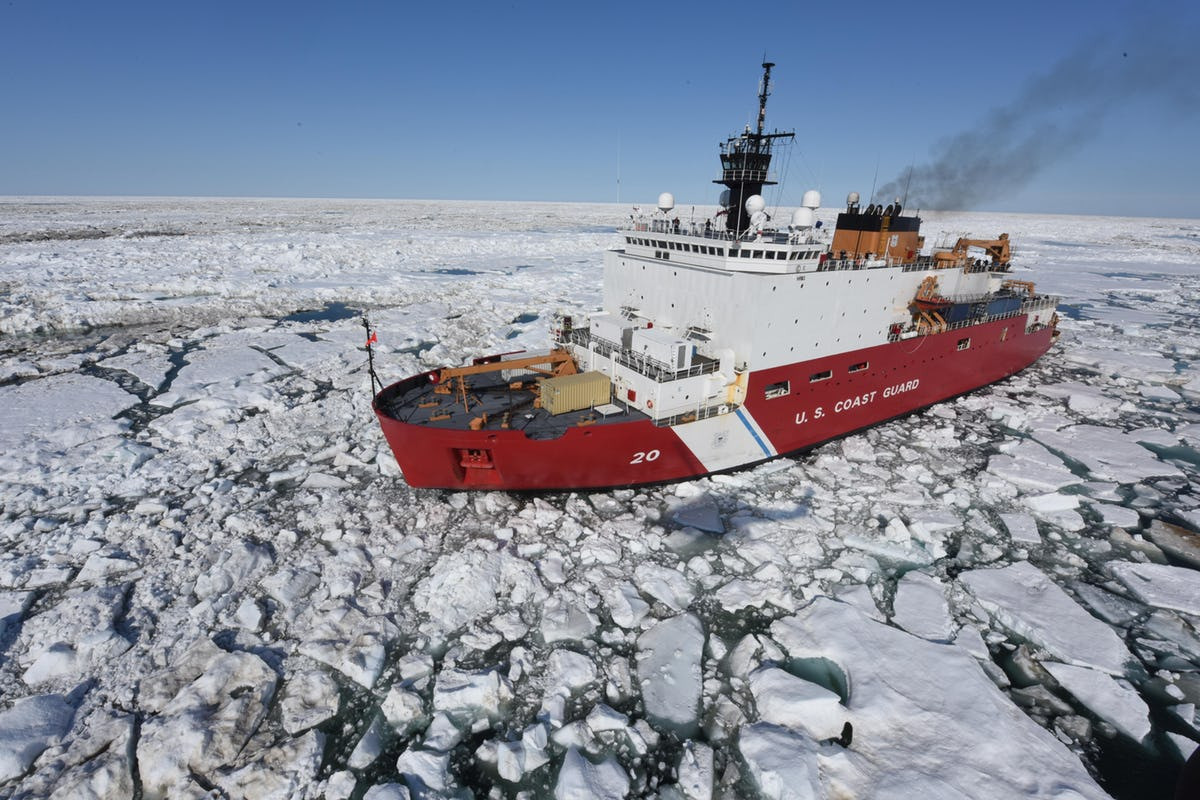US Coast Guard Bolsters Arctic Presence with New Icebreaker and Ambitious Expansion Plans
The U.S. Coast Guard recently announced a significant step towards strengthening its presence in the increasingly strategic Arctic region. Facing challenges posed by melting sea ice, increased maritime traffic, and assertive actions by Russia and China, the Coast Guard is taking decisive action to secure American sovereignty and interests in the north.
Acquisition of the Aiviq: A Medium Polar Icebreaker
At the Halifax International Security Forum, Commandant Linda Fagan revealed the Coast Guard's acquisition of a commercially available icebreaker, the Aiviq. Named after the Inupiaq word for “walrus,” this 360-foot vessel, originally used for oil exploration, will be converted into a medium polar icebreaker, similar in class to the Healy. The Aiviq's acquisition directly addresses the urgent need for additional icebreaking capabilities, highlighted by the Healy’s recent electrical fire incident.
Following necessary modifications, the Aiviq will be painted in Coast Guard colors and transferred from Pascagoula, Mississippi, to its new homeport in Juneau, Alaska. It is scheduled to commence icebreaking patrols in the spring of 2026. Vice Admiral Thomas Allan highlighted the progress made with the Aiviq's owner, noting that “They’ve already painted about a quarter of it Coast Guard icebreaker red.”
Addressing the Icebreaker Gap
The current Coast Guard fleet consists of only two polar icebreakers: the USCGC Polar Star, primarily operating in Antarctica, and the USCGC Healy, which recently returned to service after a fire. This limited capacity leaves the Coast Guard vulnerable to operational shortfalls, as seen this summer with the Healy’s incident. The acquisition of the Aiviq provides a crucial interim solution, offering additional presence and operational flexibility until the next generation of icebreakers becomes available.
The Growing Importance of the Arctic
The Arctic’s strategic importance is rapidly increasing due to climate change. As Minister Bill Blair pointed out, “As the sea ice melts and the permafrost melts, we believe that the Arctic Ocean could very easily become the main point of transit between Europe and Asia, as a trade route, in the coming decades.” This shift opens new possibilities for trade, resource extraction, and military operations, leading to increased competition among nations with Arctic interests.
This increased activity is reflected in the rising number of encounters between USCG vessels and Russian or Chinese ships in the Bering and Chukchi seas. The Coast Guard’s documented intercepts underscore the need for a robust presence to protect American interests and deter aggressive actions. The Coast Guard “met presence with presence” during these intercepts. The Coast Guard emphasizes that this is not simply an Alaskan issue but a matter of US sovereignty and national defense. The need for an expanded fleet of up to nine icebreakers is widely recognized as crucial for maintaining a strong and effective presence in the Arctic.
Plans for Future Icebreaker Construction: A Tri-National Partnership
While the Aiviq provides a timely solution to the immediate icebreaker shortage, the Coast Guard is committed to a long-term plan for fleet modernization. The service is working on acquiring three new Polar Security-class icebreaking cutters, which would be a substantial addition to the fleet's capabilities. A memorandum of understanding signed with Canada and Finland aims to leverage the combined expertise of their shipbuilding industries and accelerate the construction process of these vessels. The initial vessel, the Polar Sentinel, is slated to begin construction in 2025.
The total cost of these three ships is projected at $1.9 billion, reflecting the significant investment needed to secure America's Arctic future. The Coast Guard intends to use the Aiviq on a contract basis with a commercial crew until the new Polar Security-class cutters are operational. The cost of this contract is still under negotiation. The Coast Guard’s approach appears to be a pragmatic strategy, balancing immediate needs with long-term investments in modern, purpose-built icebreakers.
Expanding the Base: A Homeport for Arctic Operations
The Coast Guard also plans to expand its Seattle base to accommodate the growing fleet of icebreakers and other cutters. This move will position the Puget Sound as a central hub for Arctic and Pacific Northwest operations. The expansion plan is currently under review, with one of the possibilities involving the annexation of Terminal 46, a significant commercial pier and warehouse area. The final decision on the base expansion is expected next month.
A Necessary Investment for Sovereignty and Defense
Lawmakers have expressed varying views on the Coast Guard’s strategy. Some voiced concerns about the perceived inadequacy of the Aiviq as a solution to the “icebreaker gap”, pointing to Russia's fleet of at least 41 icebreakers and China's growing Arctic presence. Others have emphasized the importance of robust funding to support the Coast Guard's ambitious goals, and the need for bold action. The situation highlights the tension between immediate needs, long-term planning, and budgetary constraints. The need for the Coast Guard to maintain a strong presence in the Arctic, however, remains undeniable. Securing US interests in the face of increased international activity requires considerable commitment to both short-term and long-term strategic planning.
The Arctic's growing geopolitical significance necessitates a proactive and comprehensive approach. The Coast Guard's strategy, encompassing the acquisition of the Aiviq and plans for future icebreaker construction and base expansion, marks a critical step towards safeguarding American sovereignty and interests in this vital region. The long-term success will depend on continued investment, international cooperation, and a robust strategic vision.

















